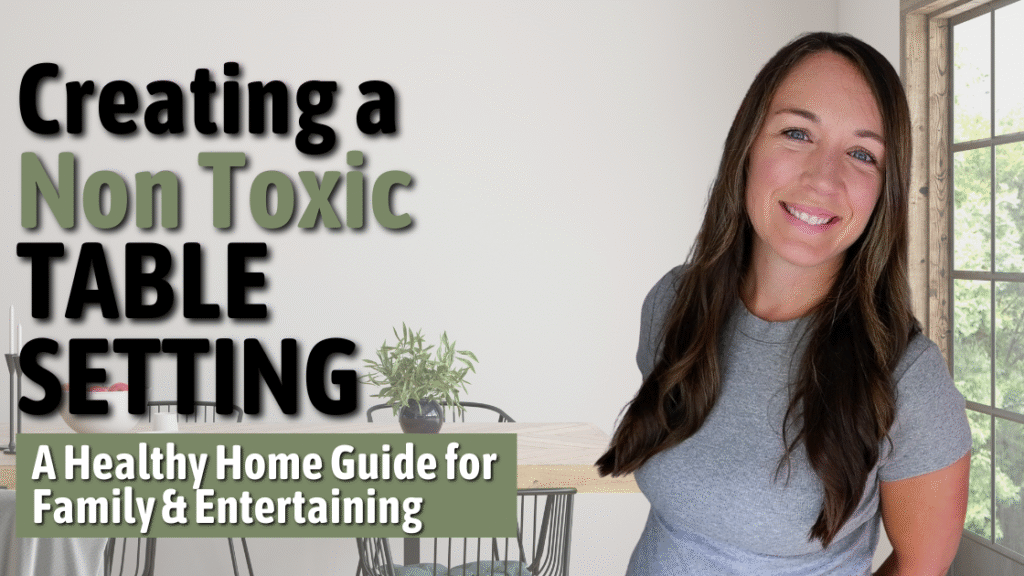
As a health-focused homeowner and busy parent, you strive to make every decision count when it comes to your family’s wellness. The dining table is where connection and nourishment happen—it’s a critical, yet often overlooked, place where daily exposure to toxins can occur.
The materials used in your plates, cutlery, and napkins all interact with the food you eat and the air you breathe. It can feel like you need a science degree just to shop for a new set of dishes. My mission is to simplify this for you. As a Building Biology practitioner, I provide fact-based knowledge to empower you to create a healthy home that supports your health, not one that works against it.
An informed approach to your non-toxic table setting is a simple, impactful change you can make today. Here is a science-backed guide to ensure your clean eating environment is safe from heavy metals and persistent chemicals.
1. Dinnerware: Choosing Lead-Free Dinnerware and Safe Ceramics
Dinnerware presents a common exposure risk through glazes that contain heavy metals like lead and cadmium. These elements can leach out of the ceramic and into your food, especially when exposed to heat, extended storage, or acidity (think coffee, fruit, or tomato sauce).
Understanding Ceramic Materials
Not all ceramics are created equal. The material and the firing process are key to safety.
- Earthenware and Stoneware: These are fired at lower temperatures, making them more porous. They rely heavily on glaze for a watertight finish, which increases the potential risk if the glaze is cheap or improperly sealed.
- Porcelain and Bone China: Fired at extremely high temperatures, these materials are very dense and less porous. While generally safer, the glaze can still contain lead or cadmium, particularly in non-food-grade decorative items or older pieces.
- Glassware: Borosilicate glass or clear, tempered glass (like Corelle) are among the most inert and stable options. Since they are generally non-porous and do not require heavy glazing, they are excellent choices for a truly toxin-free kitchen.
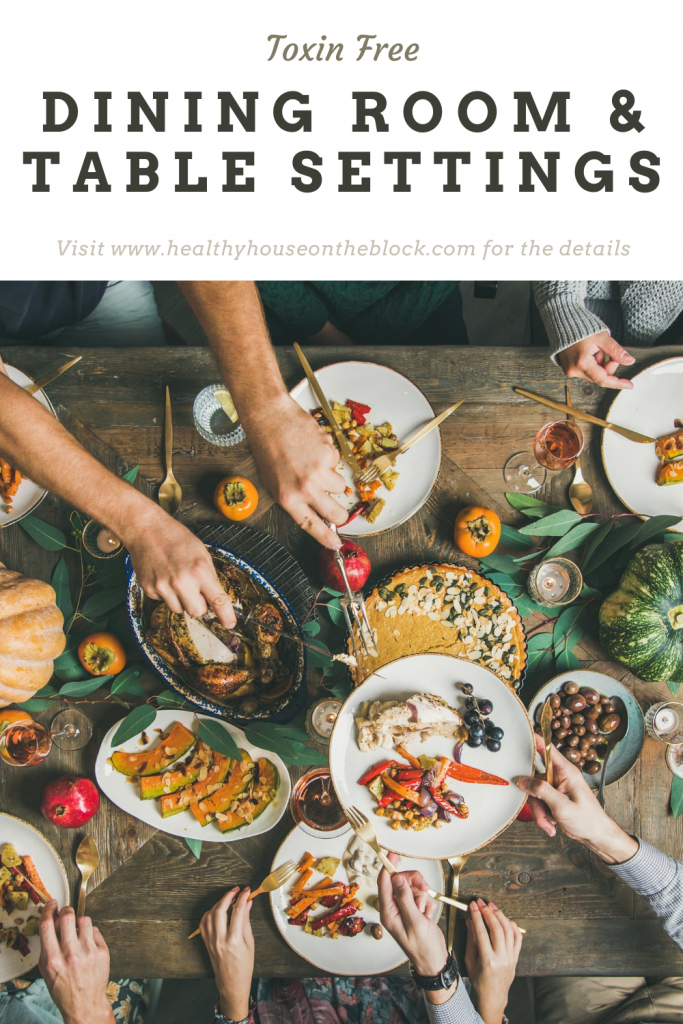
Prioritizing Safety and Avoiding Leaching
When seeking lead-free dinnerware, keep these building biology principles in mind:
- Demand Transparency: Look for manufacturers that voluntarily provide lab test results, which demonstrates their commitment to quality and safety. Look for certifications that meet strict standards, such as California Proposition 65.
- Avoid Bright Decorations: Lead and cadmium are commonly used in vibrant, glossy colors. Your lowest-risk choice is plain, clear glass or simple white/uncolored ceramic that is clearly labeled food-safe and lead-free.
- Be Careful with Vintage Items: Dishes produced before 1971 are at a higher risk of containing high levels of lead in their glazes. If you have inherited or purchased vintage ceramics, consider them decorative and do not use them for serving or storing food, particularly hot or acidic items.

2. Flatware and Serving: The Case for 18/10 Stainless Steel
Your cutlery selection is equally important, as it is in direct contact with your food and mouth for every meal. When it comes to metal, stability and corrosion resistance are your primary concerns.
- The Best Choice: 18/10 Stainless Steel The industry standard for durable, high-quality, and non-toxic flatware is 18/10 stainless steel. This ratio refers to the alloy composition: 18% chromium (for rust prevention) and 10% nickel (for maintaining a lustrous finish and preventing corrosion). This alloy is extremely stable and non-reactive, ensuring minimal leaching of metals into your food.
- Understanding Nickel: While nickel is a common allergen, in the 18/10 grade, the nickel is locked into the steel alloy, making it highly stable. If you or a family member has an extreme nickel sensitivity, look for 18/0 stainless steel (which is nickel-free but less corrosion-resistant) or explore specialty alternatives.
- PVD Finishes (Black, Gold, Rose): For those seeking modern colored flatware (matte black, brushed gold), look for pieces that use a Physical Vapor Deposition (PVD) coating. PVD is a vacuum coating process that binds metal particles to the steel, creating a durable finish without using chemical solvents. While generally safe, treat these pieces gently and opt for handwashing or an eco-cycle on your dishwasher to ensure longevity.
- Alternative: Titanium Flatware: For the most inert and lightweight option, titanium cutlery is a safe and modern choice. Titanium is naturally non-toxic, highly durable, and completely non-reactive with all foods.
- Wood for Serving: Wood serving pieces and cutting boards are natural, but they must be maintained properly. Ensure any wood is bonded with non-toxic, food-grade glues and finished only with natural oils (like coconut, or beeswax oil). Avoid pieces finished with synthetic lacquers or varnishes.
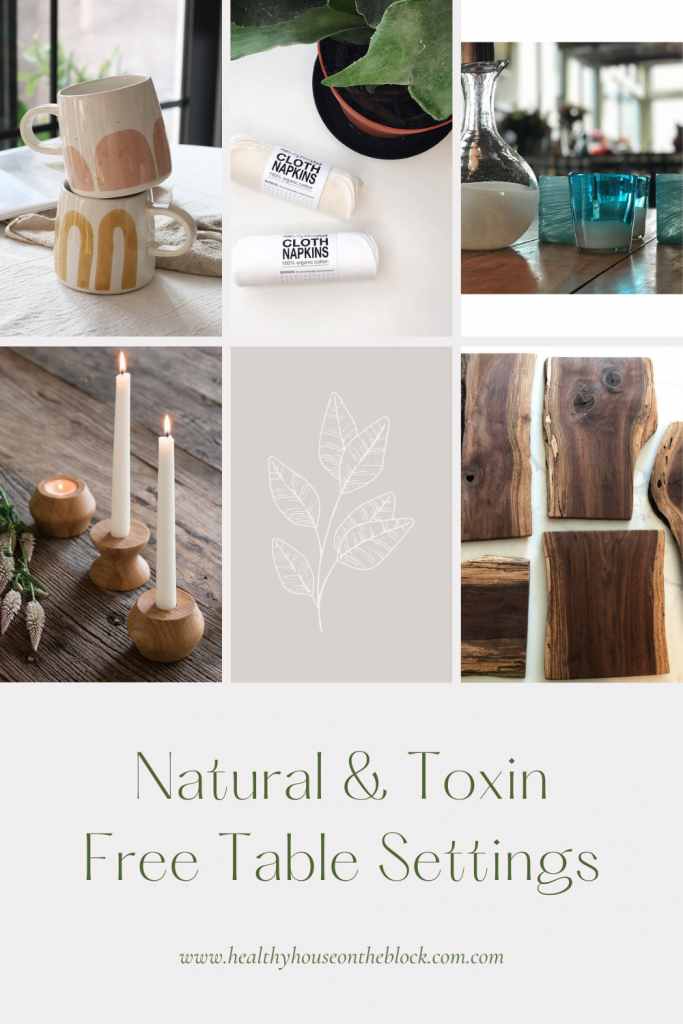
3. Linens and Ambiance: Phasing Out Forever Chemicals
Even your tablecloth and napkins can impact your indoor environment. Many commercial home textiles are treated with chemicals for “convenience,” which comes at a cost to your health.
The Reality of PFAS-Free Textiles
When you see a tablecloth or napkin advertised as “stain-resistant” or “waterproof,” you should immediately exercise caution. These properties are often achieved by coating the fabric with PFAS (per- and polyfluoroalkyl substances), also known as forever chemicals.
- PFAS do not break down in the environment or in the human body. They contribute to household dust, which is a major pathway of exposure for children. Health-focused studies have linked PFAS exposure to a weaker immune system and other concerns.
- The Safe Swap: Always choose untreated, natural fibers. Look for organic cotton or organic linen napkins and tablecloths that are specifically labeled as untreated or PFAS-free. Embrace the natural look of these fibers—a small food stain is a minor issue compared to introducing persistent toxins into your home.
A Breath of Fresh Air: Non-Toxic Centerpieces
Creating a warm atmosphere should not compromise your air quality.
- Candles: Ditch paraffin wax and synthetic fragrances, which release VOCs and particulate matter into the air. Opt for 100% pure beeswax or unscented vegetable wax (soy or coconut) candles with cotton wicks. This allows you to set a beautiful table with clean-burning light.
- Decor: Use natural elements like non-toxic, food-safe wooden bowls, fresh greenery, or flowers (ensure flowers are not heavily sprayed with pesticides) to create a beautiful, toxin-free centerpiece.
Healthy House Approved Non Toxic Table Setting Components
Dishes
Silverware
Glasses & Mugs
Platters
Napkins
Tablecloths
Centerpieces
- Natural Beeswax Candles: Pillars, Tapered Candles, Votive
- Greenery and Bouquets
- Plants, Planters and Live Greenery
- Natural Candle Holders
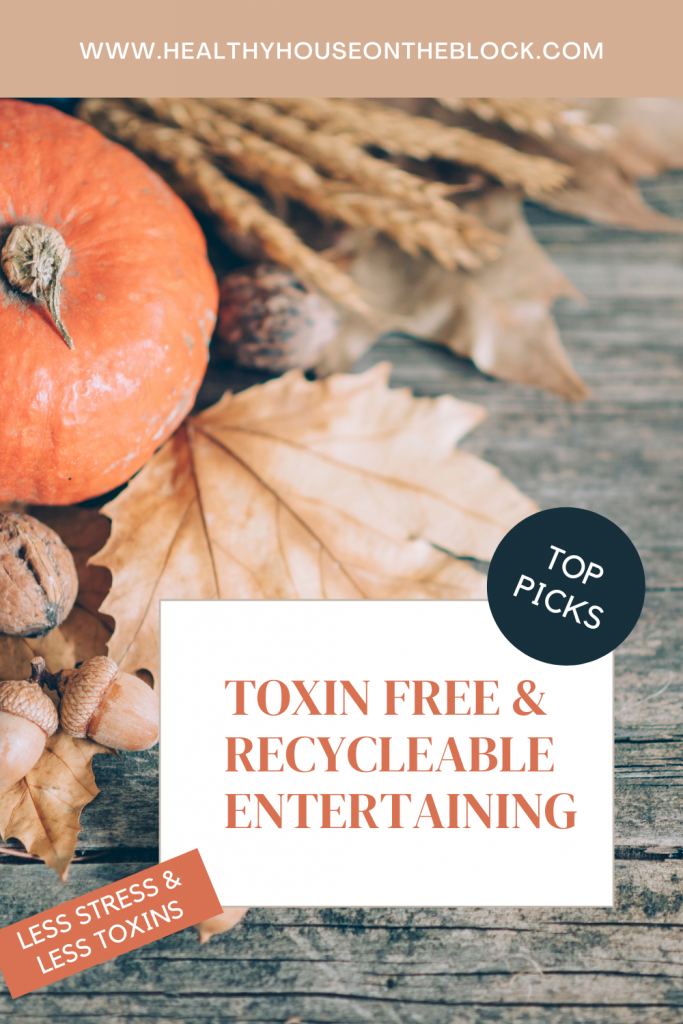
FINDING GREENGUARD FURNITURE PIECES
Just because we’re on the topic of toxin free table setting items, I thought I would also share just how to find Greenguard Certified furniture and low toxin furniture that belongs in a dining room.
You can head to Wayfair.com and use their “GreenGuard Certified” filter in your search. This is one of my favorite ways to find a lot of options in one place for furniture pieces.
Pottery Barn, West Elm and Crate & Barrel offer a lot of low toxin pieces as well.
Now, if you’re a little more on the DIY side, I LOVE finding an unfinished piece of furniture from either Unfinished Furniture Expo or Home Depot and using ECOS stain and sealer on it. It’s a bigger project, but it’s a great way to go if you’re going for natural wood.
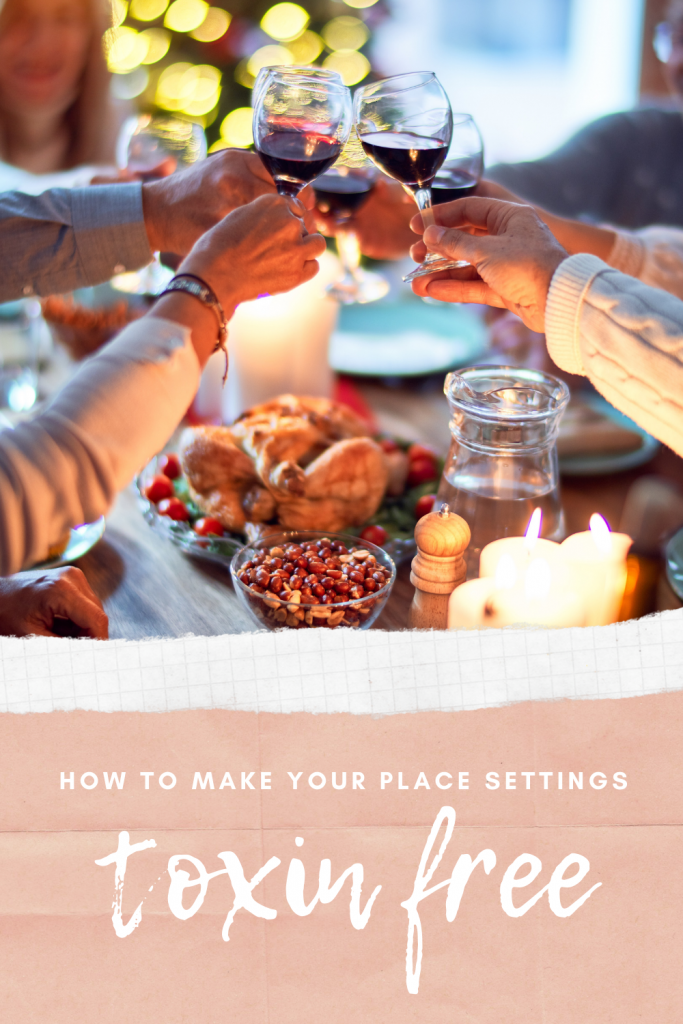
4. Air Flow and Cleaning: Supporting Your Dining Space
Creating a warm atmosphere should not compromise your air quality.
- Candles: Ditch paraffin wax and synthetic fragrances, which release VOCs and particulate matter into the air. Opt for 100% pure beeswax or unscented vegetable wax (soy or coconut) candles with cotton wicks. This allows you to set a beautiful table with clean-burning light.
- Decor: Use natural elements like non-toxic, food-safe wooden bowls, fresh greenery, or flowers (ensure flowers are not heavily sprayed with pesticides) to create a beautiful, toxin-free centerpiece.
4. Air Flow and Cleaning: Supporting Your Dining Space
A core principle of Building Biology is managing the indoor environment. When hosting, simple ventilation is your most effective tool.
- Ventilation is Key: When you have a group gathered, CO2 levels quickly rise, leading to stale air and poor cognitive function. Simply crack a window during your gathering, even slightly. This simple action dilutes CO2 and VOCs, making a significant improvement to your indoor air quality.
- Air Filtration: Running an air purifier with a HEPA and activated carbon filter in or near your dining area while entertaining is a proactive way to capture airborne particles and reduce volatile organic compounds that might be off-gassing from furniture or cooking.
- Non-Toxic Surface Cleaning: Before and after your meal, clean your table and surfaces with simple, non-toxic solutions. Avoid conventional sprays that contain synthetic fragrances and harsh chemicals, which introduce more VOCs. A simple solution of vinegar and water, or a verified non-toxic cleaner, is all you need to maintain a truly clean eating environment.
By making these mindful, informed choices, you are not just setting a beautiful table—you are empowering your family’s health. You can feel supported and understood knowing that you are confidently applying science-based knowledge to create the healthiest possible space for the people you love.
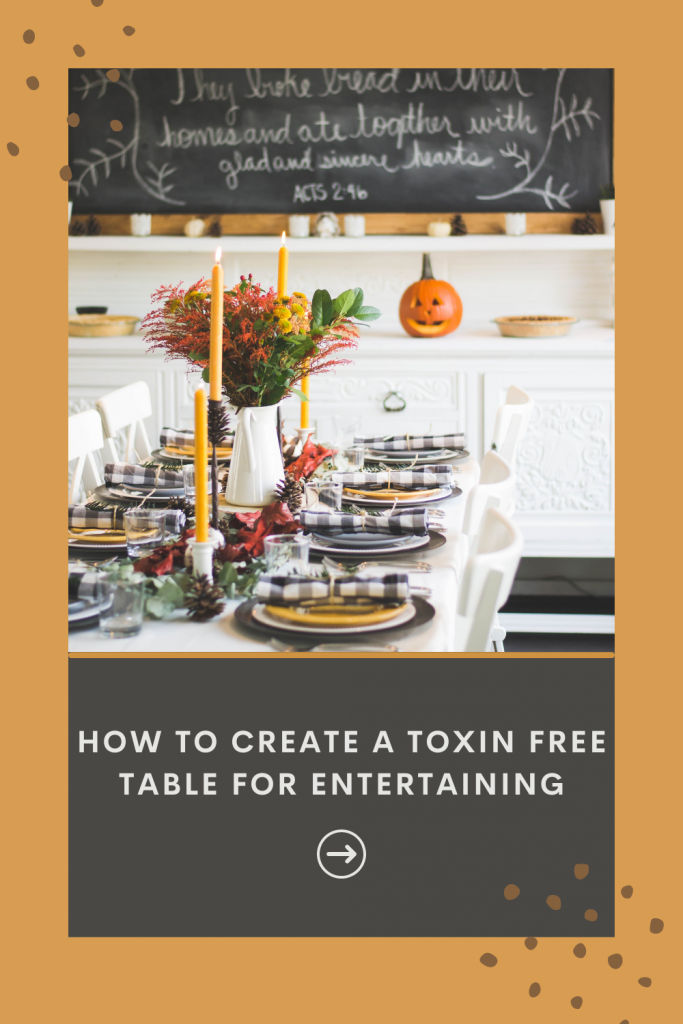
With the holidays around the corner, I know I’ll be using some of these non toxic table setting ideas myself. It’s a great way to make healthier changes without having to do a lot of work on your end. Simple swaps like compostable dinnerware and natural table setting centerpieces can make your dinner party less toxic and healthier for all your guests.
Share this:
- Click to share on Facebook (Opens in new window) Facebook
- Click to share on LinkedIn (Opens in new window) LinkedIn
- Click to share on Reddit (Opens in new window) Reddit
- Click to share on Pinterest (Opens in new window) Pinterest
- Click to print (Opens in new window) Print
- Click to share on X (Opens in new window) X


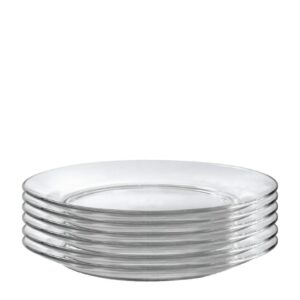
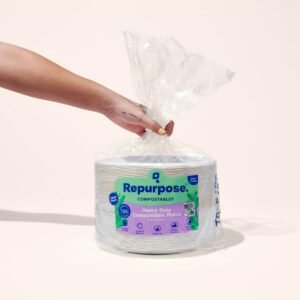
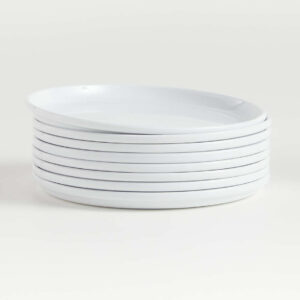
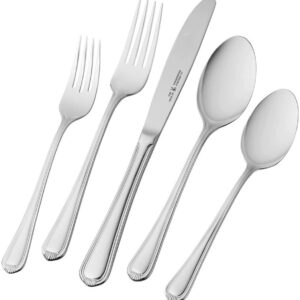
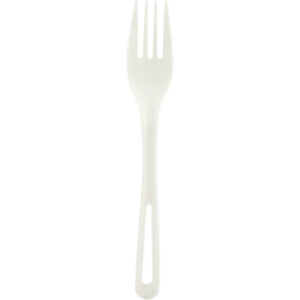
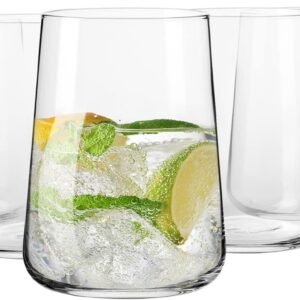
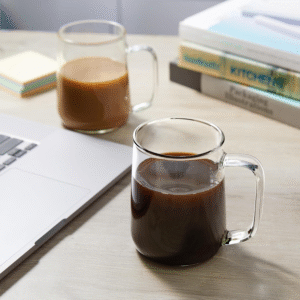
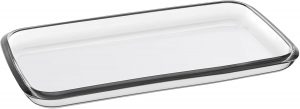
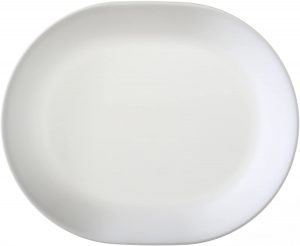

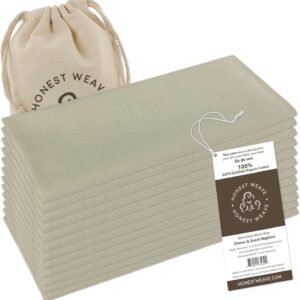
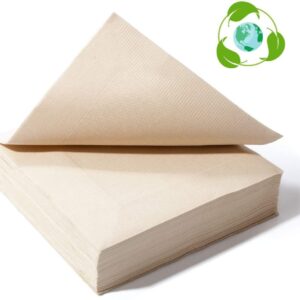
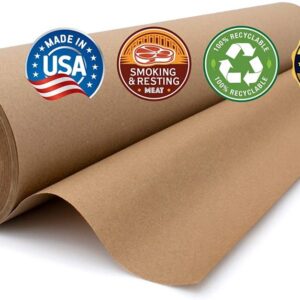
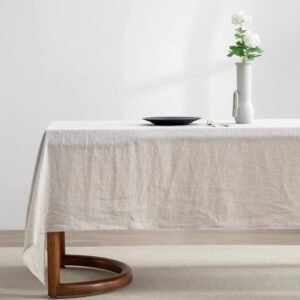



Your blog posts are so beautiful! Thank you for all of the work that you do!
Thank you, Amy! I appreciate you taking the time to leave a kind word — it made my day!